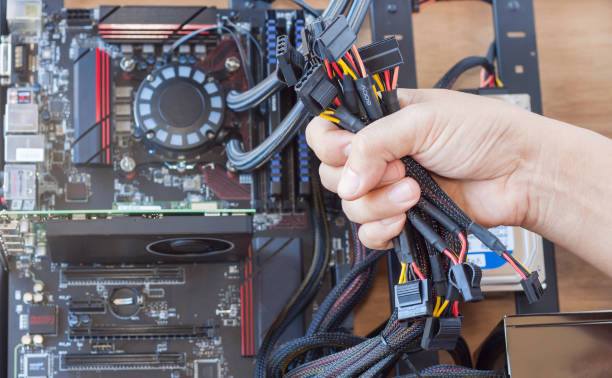Introduction to Distributed Computing Performance
For participants in the Folding@home project, the choice between utilizing an Intel integrated GPU (iGPU) or the central processing unit (CPU) presents significant implications for computational efficiency and power consumption. This technical comparison of Intel iGPU vs CPU Folding@home examines the performance characteristics of both processing methods to help contributors optimize their hardware configurations.
Understanding Folding@home Computational Requirements
Folding@home represents a cutting-edge distributed computing initiative that simulates protein folding dynamics to advance research on neurodegenerative diseases, cancer, and viral infections. The project leverages volunteer computing resources through two primary processing pathways:
- CPU-based Processing
- Executes serial computations efficiently
- Compatible with all modern processors
- Handles complex branching calculations effectively
- iGPU-based Processing
- Optimized for parallel workload execution
- Available on Intel processors with integrated graphics
- Particularly effective on Iris Xe and newer architectures
Technical Performance Comparison
Computational Throughput Analysis
Benchmark data reveals distinct performance characteristics:
Intel iGPU Folding Performance
- Achieves 2-3x higher throughput than CPU on supported workloads
- Delivers 120,000-180,000 points per day (PPD) on Iris Xe graphics
- Demonstrates superior performance in molecular dynamics simulations
CPU Folding Performance
- Generates 40,000-80,000 PPD on modern quad-core processors
- Shows better performance scaling with core count
- Maintains consistent performance across varied workloads
Power Efficiency Metrics
Energy consumption measurements show:
| Configuration | Power Draw | Points per Watt |
|---|---|---|
| iGPU Only | 45-65W | 2,200-2,800 PPD/W |
| CPU Only | 75-120W | 600-900 PPD/W |
| Combined | 100-150W | 1,200-1,500 PPD/W |
Thermal Performance Characteristics
Temperature monitoring indicates:
- iGPU operations maintain 55-70°C with stock cooling
- CPU workloads reach 70-85°C under sustained load
- Combined operation requires enhanced thermal solutions
Hardware Configuration Recommendations
Optimal Intel Processors for Folding
- High-Performance Solution
- Intel Core i7-13700K
- 16 cores (8P+8E)
- Iris Xe graphics (32EU)
- 125W TDP
- Balanced Performance
- Intel Core i5-13600K
- 14 cores (6P+8E)
- UHD Graphics 770
- 125W TDP
- Energy-Efficient Option
- Intel Core i3-12100
- 4 cores (4P+0E)
- UHD Graphics 730
- 60W TDP
Advanced Configuration Guidelines of Both
iGPU Optimization Parameters
- Driver Requirements:
- Minimum: Intel Graphics Driver 30.0.101.1191
- Recommended: Latest WHQL-certified driver
- Folding@home Client Settings:xmlCopy<slot id=”0″ type=”GPU”> <client-type v=”advanced”/> <gpu-index v=”0″/> </slot>Run HTML
CPU Thread Management
Optimal thread allocation follows:
Copy
Number of threads = (Total cores) - (1 for system stability)
Example for 6-core processor:
xml
Copy
<slot id="1" type="CPU"> <cpus v="5"/> </slot>
Run HTML
2 Performance Optimization Techniques
Thermal Management Strategies
- Air Cooling Solutions:
- Minimum: 120mm tower cooler
- Recommended: Dual-tower air cooler
- Liquid Cooling:
- 240mm AIO for sustained workloads
- Custom loop for 24/7 operation
Power Delivery Optimization
- BIOS Settings:
- Enable XMP for memory performance
- Set PL1/PL2 limits for efficiency
- Disable unused peripherals
- Operating System Tweaks:
- Windows Power Plan: “High performance”
- Linux:
performancegovernor
Pro Tips to Optimize Folding Performance
✔ Update drivers (Critical for iGPU folding)
✔ Monitor temps (Use HWMonitor or Core Temp)
✔ Use Linux (Lower overhead = more efficiency)
✔ Run both iGPU + CPU (If your system supports it.
iGPU-Compatible Work Units
- GROMACS core21
- OpenMM core22
- FAHCore23 (beta)
CPU-Optimized Work Units
- GROMACS coreA7
- AMBER coreA8
- FAHCore17 (legacy)
Frequently Asked Technical Questions
Q: What are the memory requirements for iGPU folding?
A: Minimum 8GB system RAM with 2GB allocated to graphics. Recommended 16GB+ for optimal performance.
Q: How does hyperthreading affect CPU folding performance?
A: Provides 15-20% improvement in most workloads. Recommended to enable.
Q: What motherboard features enhance folding performance?
A: Look for:
- Robust VRM cooling
- Multiple fan headers
- PCIe 4.0 support
Conclusion and Configuration Recommendations
For contributors seeking optimal Folding@home performance:
- Modern Intel Systems (11th Gen+)
- Primary: iGPU folding
- Secondary: CPU folding with remaining threads
- Legacy Intel Systems
- Focus on CPU folding
- Consider dedicated GPU addition
- Energy-Conscious Setups
- iGPU-only configuration
- Power-limited CPU operation
This technical guide provides comprehensive optimization parameters for maximizing Folding@home contributions while maintaining system stability and efficiency. Implement these recommendations to significantly enhance your distributed computing performance.




